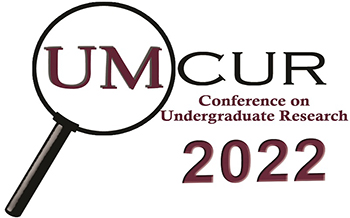Project Type
Presentation
Faculty Mentor’s Full Name
Sarah Halvorson
Faculty Mentor’s Department
Geography
Abstract / Artist's Statement
Potable water and safe sanitation services are some of the most crucial resources to communities all around the globe. Currently, as many as 2.2 billion people lack access to safely managed drinking water, and it is predicted that 1.8 billion people will be living in countries with absolute water scarcity by 2025. This indispensable resource and lifeblood of civilization originates in the “water towers of the world”: mountains. It is estimated that over half of the human population relies on major streams and rivers flowing out of mountainous areas. Communities in these areas face serious challenges when there is not a reliable water supply; women in mountain communities, more specifically, bear this burden more than most. Mountain women are particularly vulnerable to water stress because of their traditional roles as homemakers and caretakers. These roles task women with the crucial responsibility of sourcing and collecting water for their communities. When water becomes scarce, opportunities for women dwindle as well, thus impacting gender-related human development on a significant scale. This paper provides an analysis of gender-related development and water access in three mountainous countries in different corners of the globe: Switzerland, Rwanda, and Nepal. These countries were selected based on their potential to showcase significant variations in both human development and water access. A compare-and-contrast approach of the case studies yields valuable insight into how women’s lives are changed when they are faced with water stress. The paper begins to examine best practices in all three countries, and ultimately confirms the necessity of fully integrating women into decision-making structures concerning water access and management.
Category
Social Sciences
Women and Water in Mountain Communities: interactions between Resource Access and Gender-based Development
UC 332
Potable water and safe sanitation services are some of the most crucial resources to communities all around the globe. Currently, as many as 2.2 billion people lack access to safely managed drinking water, and it is predicted that 1.8 billion people will be living in countries with absolute water scarcity by 2025. This indispensable resource and lifeblood of civilization originates in the “water towers of the world”: mountains. It is estimated that over half of the human population relies on major streams and rivers flowing out of mountainous areas. Communities in these areas face serious challenges when there is not a reliable water supply; women in mountain communities, more specifically, bear this burden more than most. Mountain women are particularly vulnerable to water stress because of their traditional roles as homemakers and caretakers. These roles task women with the crucial responsibility of sourcing and collecting water for their communities. When water becomes scarce, opportunities for women dwindle as well, thus impacting gender-related human development on a significant scale. This paper provides an analysis of gender-related development and water access in three mountainous countries in different corners of the globe: Switzerland, Rwanda, and Nepal. These countries were selected based on their potential to showcase significant variations in both human development and water access. A compare-and-contrast approach of the case studies yields valuable insight into how women’s lives are changed when they are faced with water stress. The paper begins to examine best practices in all three countries, and ultimately confirms the necessity of fully integrating women into decision-making structures concerning water access and management.
